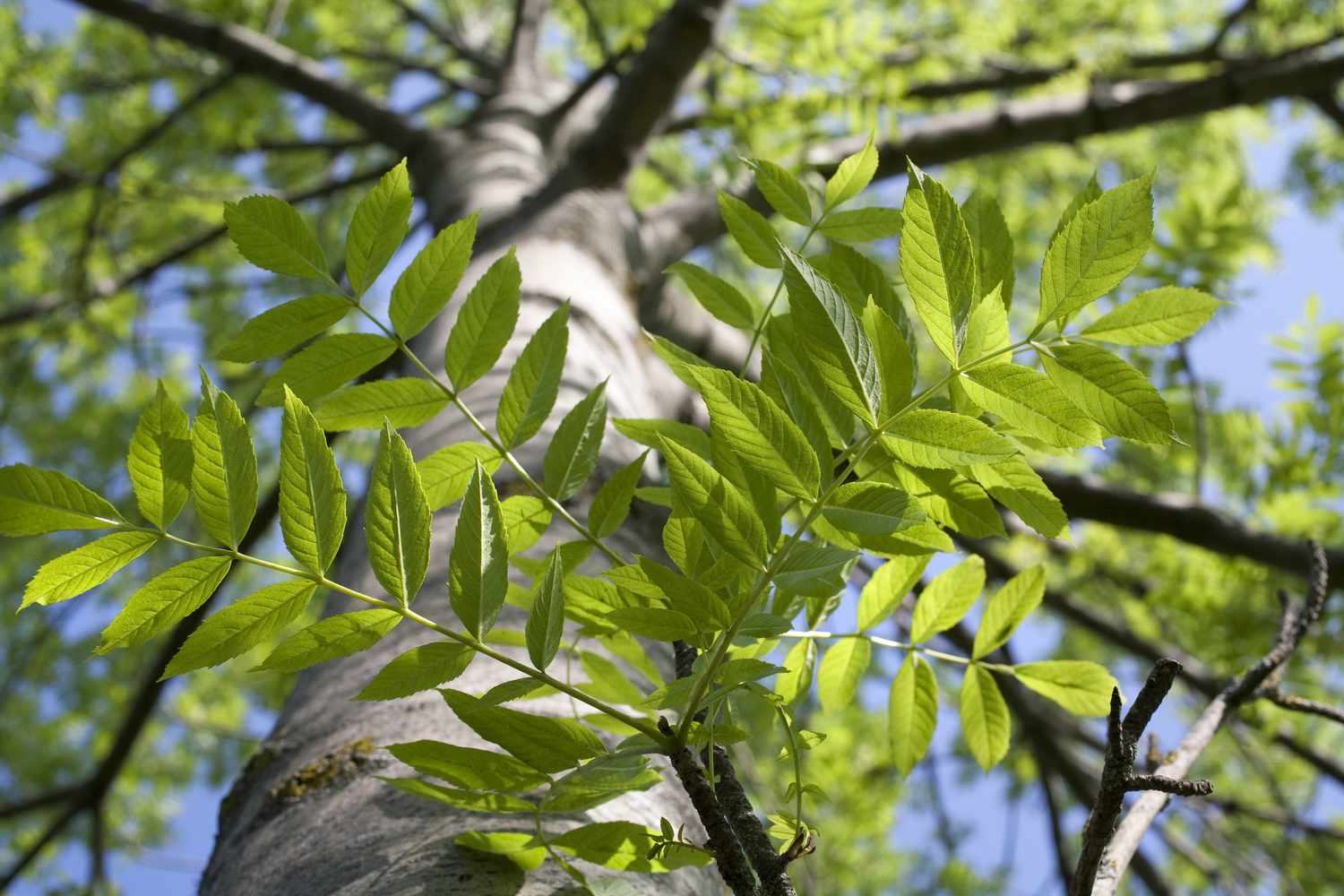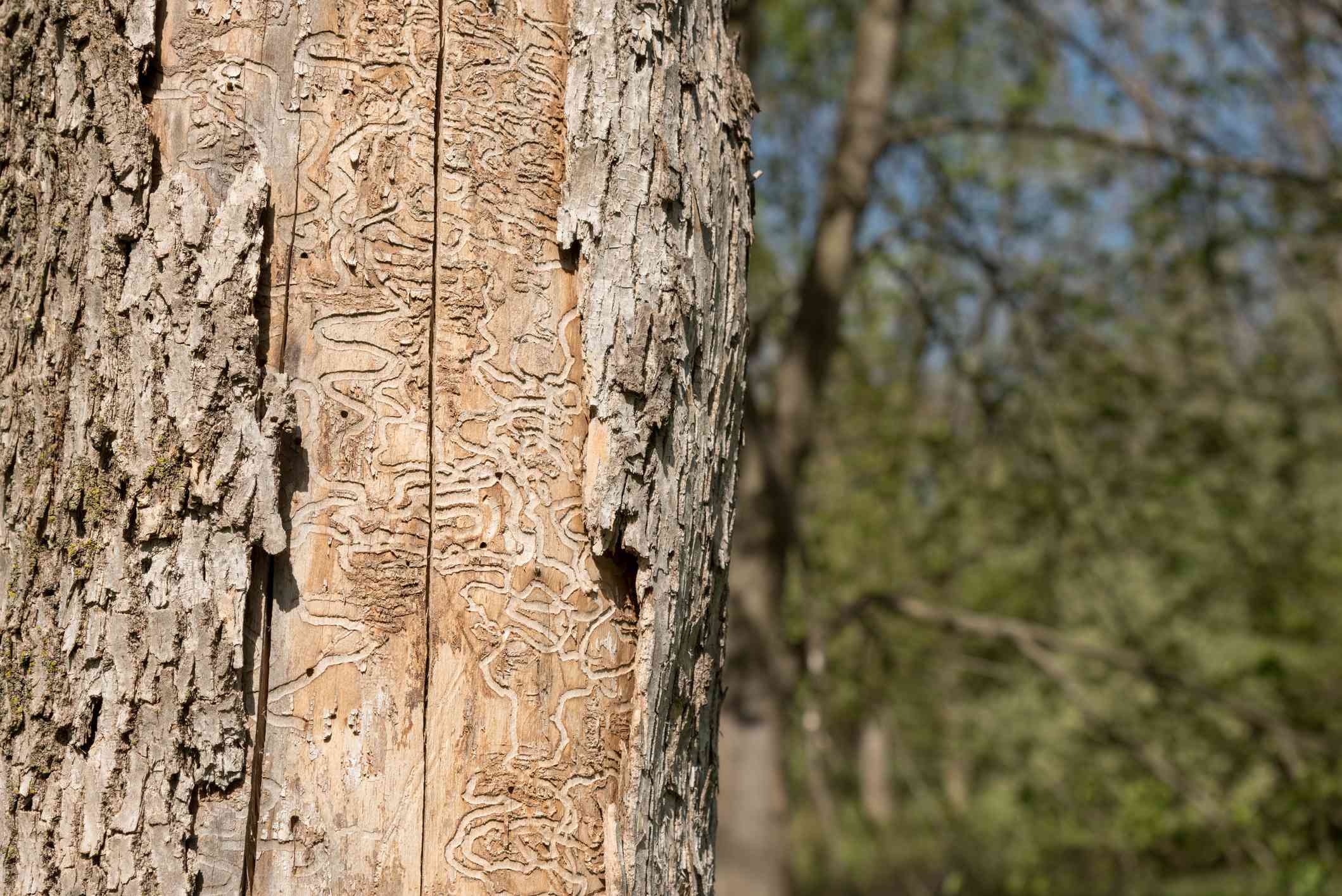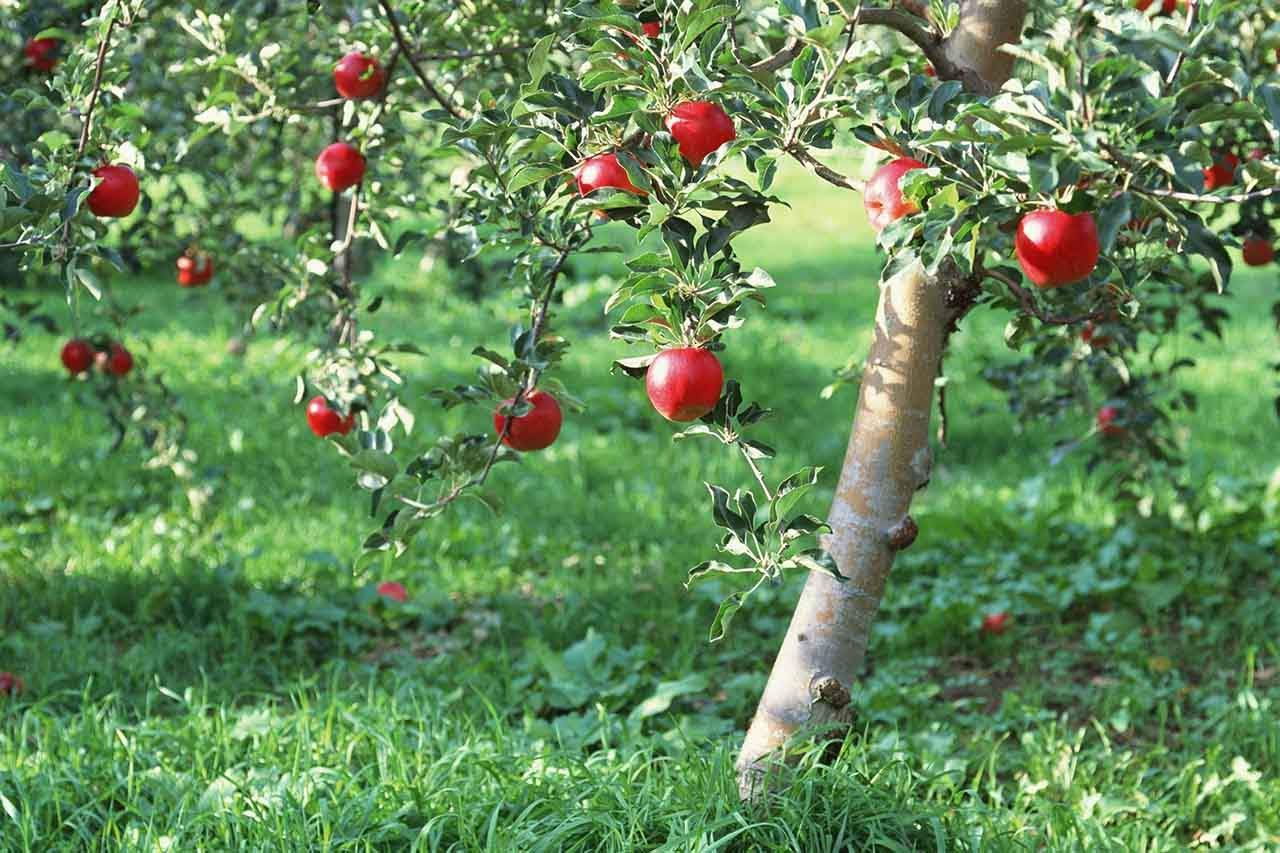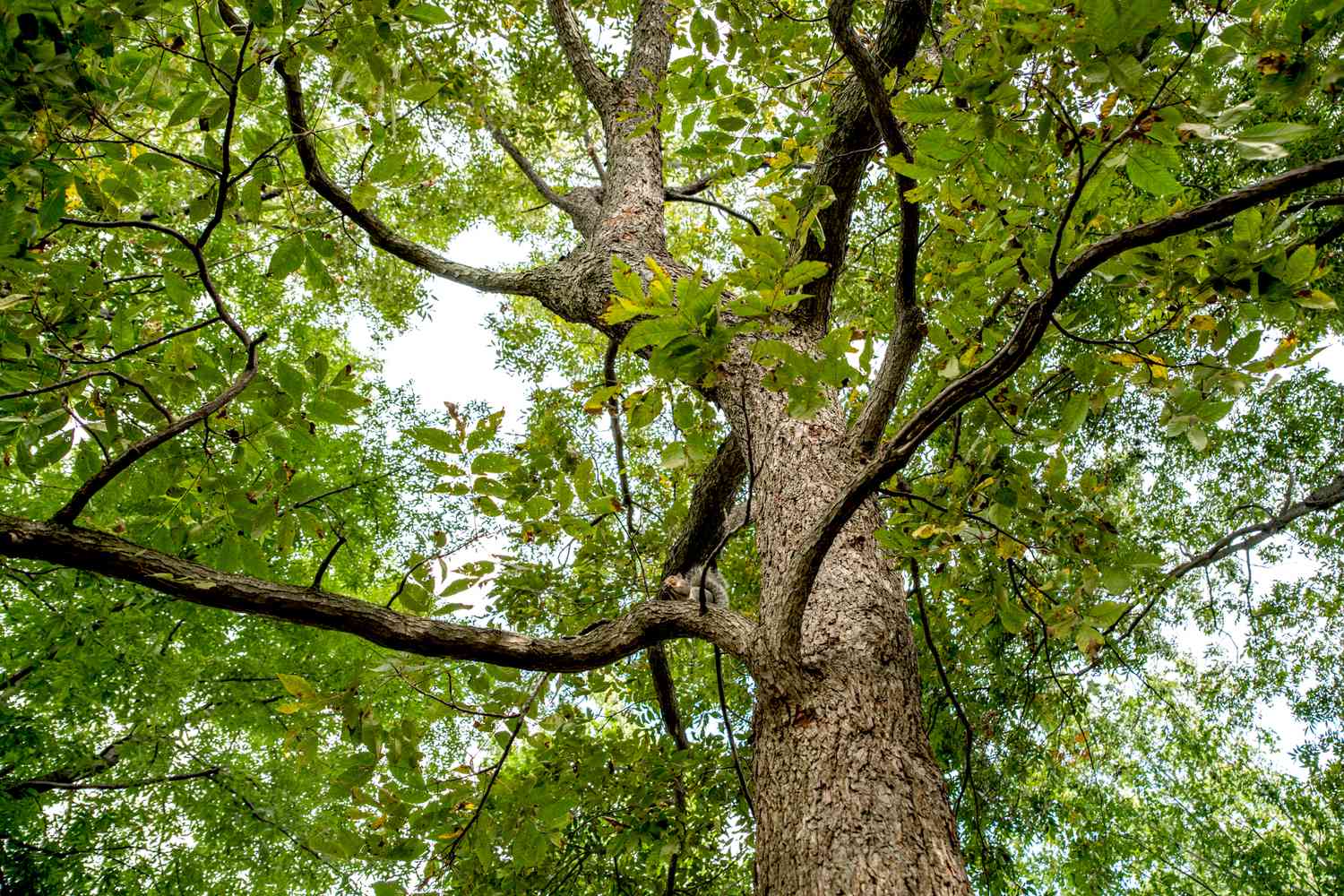Home>Gardening Techniques>Plant Care>How Fast Do Ash Trees Grow
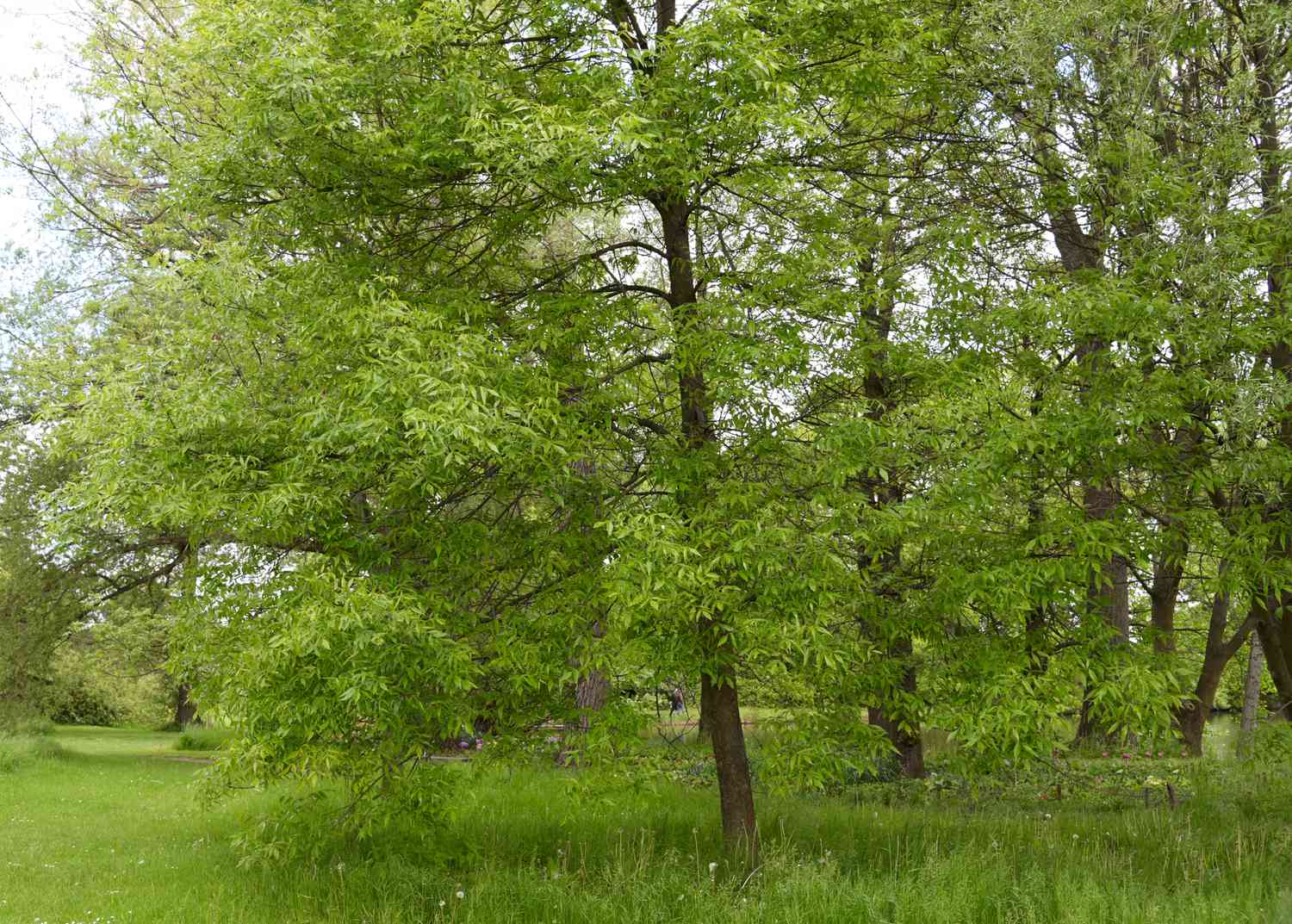

Plant Care
How Fast Do Ash Trees Grow
Modified: February 10, 2024
Learn about the growth rate of ash trees. Discover essential plant care tips to ensure proper growth and maintenance.
(Many of the links in this article redirect to a specific reviewed product. Your purchase of these products through affiliate links helps to generate commission for Chicagolandgardening.com, at no extra cost. Learn more)
Table of Contents
Introduction
Welcome to the fascinating world of ash trees! These magnificent trees are known for their beauty, resilience, and ability to enhance the environment. If you are a plant enthusiast or a homeowner looking to incorporate ash trees into your landscape, you may be wondering how fast these trees grow.
Ash trees, scientifically known as the genus Fraxinus, are deciduous trees that belong to the Oleaceae family. They are native to North America, Europe, and Asia, and are popular for their elegant and graceful appearance.
Before delving into the growth rate of ash trees, it is important to note that various factors can affect their growth. These factors include climate, soil conditions, sunlight exposure, watering and maintenance practices, as well as the presence of diseases and pests.
In this article, we will explore in detail the factors that influence the growth of ash trees, ranging from the specific climate requirements to the proper pruning techniques. By understanding these aspects, you will be better equipped to nurture and care for your ash trees, ensuring their healthy growth and longevity.
Whether you are a novice gardener or a seasoned plant enthusiast, we have compiled all the essential information you need to know about the growth of ash trees. So, let’s dive in and explore the exciting world of ash tree growth!
Factors Affecting Ash Tree Growth
The growth of ash trees can be influenced by various factors. By understanding these factors, you can create an optimal environment for your ash trees to thrive and reach their full potential. Let’s delve into the key factors affecting the growth of ash trees:
- Climate: Ash trees exhibit a wide range of adaptability to different climates. However, they generally prefer temperate regions with mild summers and cold winters. Ideal temperatures for ash tree growth range from 60 to 85 degrees Fahrenheit (15 to 29 degrees Celsius). Extreme heat or prolonged periods of frost can negatively impact their growth.
- Soil Conditions: The soil quality is crucial for the healthy growth of ash trees. They thrive in well-draining soils with a pH range of 6.0 to 7.5. The soil should be rich in organic matter and have good water retention capabilities. Additionally, avoiding compacted or waterlogged soils is essential, as these conditions can restrict root growth and lead to stunted tree development.
- Sunlight Exposure: Ash trees are known for their preference for full sun. They require at least six hours of direct sunlight every day for optimal growth. Adequate sunlight exposure promotes photosynthesis, which is essential for the tree’s overall health and development.
- Watering and Maintenance: Proper watering is crucial during the early stages of ash tree growth. Young trees require regular and deep watering to establish a robust root system. Once established, occasional deep watering during dry periods is usually sufficient. Regular mulching around the base of the tree helps conserve soil moisture and suppress weed growth. Additionally, routine maintenance, such as removing deadwood and regularly inspecting for diseases and pests, is essential to promote healthy growth.
- Pruning and Trimming: Pruning plays a vital role in shaping ash trees and promoting healthy growth. It is essential to prune ash trees during their dormant season to remove dead or damaged branches, improve branch structure, and enhance air circulation. Proper pruning techniques help prevent the spread of diseases and increase overall tree vitality.
- Diseases and Pests: Ash trees are susceptible to certain diseases and pests that can affect their growth. The emerald ash borer, a highly destructive insect, is one of the major threats to ash trees. Regular inspections and proactive treatments can help prevent infestations. Additionally, being aware of common diseases such as ash dieback and powdery mildew and taking appropriate measures can safeguard the health of ash trees.
By considering these factors and implementing proper care and maintenance practices, you can ensure the healthy growth of your ash trees. Stay tuned for the next section, where we will delve into the specific climate requirements for ash trees!
Climate Requirements for Ash Trees
Ash trees have a moderate level of adaptability to different climates, but they prefer specific conditions that promote optimal growth. Understanding the climate requirements of ash trees is essential for ensuring their health and vitality. Let’s explore the key climate factors that influence the growth of ash trees:
- Temperature: Ash trees thrive in temperate climates. They prefer regions with moderate summers and cold winters. Ideal temperatures for ash tree growth range from 60 to 85 degrees Fahrenheit (15 to 29 degrees Celsius). Extreme heat can stress the trees and hinder their growth, while prolonged periods of frost can damage the foliage and restrict growth.
- Frost Tolerance: While ash trees can tolerate cold temperatures, some varieties are more frost-tolerant than others. For areas with harsh winters, selecting frost-tolerant ash tree varieties will ensure their survival and healthy growth. These varieties have adapted mechanisms to protect their foliage and maintain growth even in freezing conditions.
- Humidity: Ash trees are relatively tolerant of different humidity levels. They can adapt to both more humid and drier climates. However, in regions with high humidity, it is important to ensure good air circulation around the trees to prevent fungal diseases.
- Wind Exposure: Ash trees can tolerate moderate wind exposure, but strong winds can damage their branches and foliage. Planting ash trees in sheltered areas or providing windbreaks can help protect them from excessive wind exposure.
- Hardiness Zones: Ash trees have different hardiness zone requirements depending on the species or variety. It is important to choose ash tree varieties that are suitable for your specific hardiness zone. Consult with local gardening experts or refer to hardiness zone maps to determine the best ash tree varieties for your region.
By considering these climate requirements and selecting appropriate ash tree varieties, you can create an environment that supports optimal growth and health. In the next section, we will explore the soil requirements for ash trees and how they affect their overall growth process. Stay tuned!
Soil Requirements for Ash Trees
The soil quality plays a vital role in the growth and development of ash trees. Providing the right soil conditions is essential for ensuring the health and longevity of these beautiful trees. Let’s dive into the key soil requirements for ash trees:
- Well-Draining Soil: Ash trees thrive in well-draining soils. They prefer soils that allow excess water to drain freely, preventing waterlogging and root rot. Ensuring good drainage can be achieved by selecting elevated planting locations or amending heavy soils with organic matter, such as compost or well-rotted manure.
- pH Range: Ash trees prefer slightly acidic to neutral soil pH levels. The ideal pH range for ash tree growth is between 6.0 and 7.5. Conducting a soil test can help determine the pH level of your soil. If the pH is too acidic or alkaline, you can adjust it by adding the appropriate amendments.
- Soil Nutrients: Ash trees benefit from nutrient-rich soils. They require a balanced supply of essential nutrients, including nitrogen, phosphorus, and potassium, for healthy growth. Regularly fertilizing the soil with a balanced fertilizer formulated for trees can help ensure that ash trees receive adequate nutrients.
- Organic Matter: Adding organic matter to the soil provides numerous benefits to ash trees. Organic matter improves soil structure, promotes moisture retention, and enhances nutrient availability. Incorporating compost or well-decomposed organic matter into the planting hole or applying it as a mulch around the base of the tree can significantly contribute to the overall health and growth of ash trees.
- Avoid Compacted Soils: Ash trees are sensitive to compacted soils, as it restricts root growth and hampers nutrient and water uptake. Avoid heavy foot traffic or the use of heavy equipment around the base of the tree, as it can compact the soil. Implementing proper soil management practices, such as aerating the soil and avoiding excessive soil compaction, is crucial for promoting healthy ash tree growth.
By ensuring that your ash trees are planted in well-draining soil with the appropriate pH level, nutrient content, and organic matter, you provide them with a favorable environment for growth. In the next section, we will discuss the sunlight requirements for ash trees and how it impacts their overall development. Stay tuned!
Sunlight Needs of Ash Trees
Proper sunlight exposure is essential for the healthy growth and development of ash trees. These trees thrive in full sun conditions and require a certain amount of sunlight to perform essential physiological processes. Let’s explore the sunlight needs of ash trees:
Ash trees are classified as full-sun plants, which means they require at least six hours of direct sunlight per day to thrive. Direct sunlight is crucial for promoting photosynthesis, the process by which plants convert sunlight into energy. Through photosynthesis, ash trees produce carbohydrates that are essential for growth, leaf development, and overall tree vitality.
Insufficient sunlight exposure can negatively impact the growth and productivity of ash trees. When deprived of proper sunlight, the trees may experience stunted growth, have weak branches, and exhibit sparse foliage. Furthermore, inadequate sunlight can reduce the tree’s ability to produce energy, leading to poor overall health and decreased resistance to diseases and pests.
When choosing a location to plant your ash tree, make sure it is in an area where it will receive ample sunlight throughout the day. Avoid planting near tall buildings or dense trees that may cast shade, obstructing sunlight from reaching the ash tree. If your landscape has limited areas with full sun, consider pruning or trimming nearby vegetation to allow more sunlight to reach the ash tree.
It is important to note that while ash trees prefer full sun, they can tolerate partial shade. However, if the tree receives less than six hours of direct sunlight, it may result in reduced growth and overall vigor.
In regions with hot climates or intense sunlight, it is also important to ensure that the ash tree receives some afternoon shade to protect it from excessive heat. Providing a little respite from the scorching sun can help prevent heat stress and maintain the tree’s health.
By providing adequate sunlight to your ash tree, you are ensuring its proper growth, foliage density, and overall vitality. In the next section, we will discuss the importance of watering and maintenance practices for the healthy growth of ash trees. Stay tuned!
Watering and Maintenance of Ash Trees
Proper watering and maintenance practices are essential for the healthy growth and vitality of ash trees. Adequate water supply and routine care ensure that the trees receive the necessary nutrients and attention to thrive. Let’s explore the importance of watering and maintenance for ash trees:
Watering: Young ash trees require regular and deep watering to establish a strong and extensive root system. During the first few years after planting, it is crucial to provide sufficient moisture for the tree’s growth. Water the tree deeply, ensuring that the water penetrates the root zone. Aim to water the tree at least once a week, providing enough moisture to reach a depth of 12-18 inches (30-45 cm).
As the ash tree matures, it becomes more drought-tolerant, but it still benefits from occasional deep watering during periods of extended dryness. Monitor the soil moisture and water the tree when the top few inches of soil feel dry. However, avoid overwatering, as excessively wet soil can lead to root rot and other fungal diseases.
Mulching: Applying a layer of organic mulch around the base of the ash tree helps conserve soil moisture and suppress weed growth. Mulch acts as a barrier, reducing evaporation and maintaining a more consistent soil temperature. Apply a 2-4 inch (5-10 cm) layer of mulch, keeping it a few inches away from the tree trunk to prevent stem rot.
Pruning and Trimming: Regular pruning is essential for maintaining the health and shape of ash trees. Pruning should be done during the dormant season to remove any dead, damaged, or diseased branches. Additionally, pruning helps improve the tree’s structure, allowing better air circulation and reducing the risk of disease and pest infestation.
Inspecting for Diseases and Pests: Regularly inspecting ash trees for signs of diseases and pests is crucial for early detection and prevention. Common diseases affecting ash trees include ash dieback and powdery mildew. The emerald ash borer is a highly destructive pest that can infest and kill ash trees. If you notice any symptoms, such as dieback, bark splitting, or unusual leaf discoloration, consult with a professional arborist to identify and address the issue promptly.
By implementing proper watering practices, mulching, routine pruning, and vigilant inspection for diseases and pests, you can ensure the overall health and well-being of your ash trees. In the next section, we will explore the importance of pruning and trimming ash trees to promote healthy growth and maintain their aesthetics. Stay tuned!
Pruning and Trimming Ash Trees
Pruning and trimming are essential practices for maintaining the health, structure, and aesthetics of ash trees. Proper pruning techniques ensure that the tree remains strong, well-balanced, and resistant to diseases and pests. Let’s explore the importance of pruning and trimming ash trees:
Promotes Structural Integrity: Regular pruning helps maintain the structural integrity of ash trees. By removing dead, damaged, or crossing branches, you can reduce the risk of branch failure and potential damage to the tree or surrounding property. Proper pruning techniques also help develop a well-balanced and attractive tree shape.
Improves Air Circulation: Pruning allows for better air circulation throughout the tree canopy. Increased airflow reduces the risk of fungal diseases, such as powdery mildew, by minimizing the conditions conducive to their growth. Well-pruned trees also benefit from enhanced light penetration, which promotes overall tree health and vitality.
Controls Tree Size: Ash trees have the potential to grow quite large if left uncontrolled. Pruning can help manage the size of the tree, ensuring that it remains in proportion to its surroundings. Proper pruning techniques, such as crown reduction or selective limb removal, can help control the height and spread of the tree while preserving its natural beauty.
Encourages New Growth: Pruning stimulates new growth by removing old, non-productive branches. By strategically pruning the tree, you can direct its energy towards developing new branches and foliage. This promotes a denser canopy and a healthier overall appearance.
Shape and Aesthetics: Pruning allows you to shape the ash tree according to your desired aesthetics. Regular trimming helps maintain a tidy and well-groomed appearance. A well-pruned ash tree enhances the overall visual appeal of your landscape, creating an inviting and aesthetically pleasing environment.
When pruning ash trees, it is important to follow proper techniques. Start by removing any dead, diseased, or damaged branches. Trim away any crossing or rubbing branches to prevent injury and promote better branch growth. It is recommended to prune ash trees during their dormant season, typically in late winter or early spring, before new growth begins.
For larger pruning tasks or if you are unsure about proper pruning techniques, it is advisable to seek assistance from a professional arborist. They have the knowledge and experience to safely and effectively prune ash trees, ensuring their continued health and longevity.
By regularly pruning and trimming your ash trees, you not only enhance their appearance but also promote their overall health and structural integrity. In the next section, we will discuss common diseases and pests that can affect the growth of ash trees and how to manage them effectively. Stay tuned!
Diseases and Pests Affecting Ash Tree Growth
Ash trees are susceptible to certain diseases and pests that can have a significant impact on their growth and overall health. Understanding the common ailments that affect ash trees and taking appropriate measures is essential for their care and well-being. Let’s explore some of the common diseases and pests that can affect ash tree growth:
Emerald Ash Borer: The emerald ash borer (Agrilus planipennis) is a highly destructive beetle that poses a severe threat to ash trees. These invasive insects burrow through the bark and disrupt the tree’s nutrient and water transport, ultimately leading to its decline and death. Early signs of an infestation include thinning foliage, dieback, D-shaped exit holes, and S-shaped galleries under the bark. If you suspect an emerald ash borer infestation, it is essential to consult with a professional arborist who can provide appropriate treatment options.
Ash Dieback (Hymenoscyphus fraxineus): Ash dieback, also known as Chalara dieback, is a serious fungal disease that affects ash trees. It is caused by the fungus Hymenoscyphus fraxineus and can lead to significant dieback of branches, crown decline, and ultimately the death of the tree. Symptoms include wilting, dark lesions on the bark, and the presence of small fruiting bodies on affected branches. If ash dieback is suspected, it is crucial to report it to local authorities and seek advice from professionals on appropriate management strategies.
Powdery Mildew: Powdery mildew is a common fungal disease affecting ash trees. It is characterized by a white or gray powdery growth on the leaves, shoots, and buds. Powdery mildew thrives in warm and humid conditions, typically during the summer months. While this disease is usually not fatal to ash trees, severe infestations can weaken the tree and make it more susceptible to other diseases and pests. Pruning affected branches and improving airflow can help reduce the incidence of powdery mildew.
Verticillium Wilt: Verticillium wilt is a soilborne fungal disease that affects various tree species, including ash trees. It causes wilting, yellowing, and browning of leaves, as well as branch dieback. This disease spreads through the soil and enters the tree’s vascular system, disrupting water and nutrient flow. Unfortunately, there is no cure for verticillium wilt, and affected ash trees often require removal to prevent the spread of the disease to healthy trees. Maintaining optimal tree health through proper watering, fertilization, and pruning practices can help prevent verticillium wilt.
Regular inspections, prompt recognition, and appropriate action are crucial for managing diseases and pests affecting ash trees. Implementing preventive measures, such as maintaining tree health, providing proper cultural practices, and promptly addressing any signs of infestation or disease, can help protect ash trees from severe damage. Consulting with a professional arborist for accurate diagnosis and treatment options is recommended for effective management of ash tree ailments.
Now that we have explored diseases and pests affecting ash tree growth, let’s move on to discussing some common varieties of ash trees and their unique characteristics. Stay tuned!
Common Varieties of Ash Trees
The genus Fraxinus encompasses several species of ash trees, each with its unique characteristics and qualities. These common varieties of ash trees offer diverse options for landscaping, shade, and ornamental purposes. Let’s explore some of the popular varieties of ash trees:
- White Ash (Fraxinus americana): White ash is a well-known variety native to North America. It is highly valued for its beautiful, pale gray bark and vibrant fall foliage, which turns a stunning mix of yellow, orange, and purple. White ash trees can reach heights of up to 80 feet, making them ideal for providing shade in large landscapes.
- Green Ash (Fraxinus pennsylvanica): Green ash, also native to North America, is a versatile variety that adapts well to different soil types. It has a rounded shape with dense, glossy green foliage that turns a yellowish-green in the fall. Green ash trees are popular for their fast growth rate and ability to withstand urban environments.
- Black Ash (Fraxinus nigra): Black ash is native to eastern North America and is known for its unique, deeply furrowed bark. This variety is highly valued for its finely divided foliage and its ability to adapt to wet soil conditions. Black ash trees are often used for furniture making and basket weaving due to the flexibility and strength of their wood.
- European Ash (Fraxinus excelsior): European ash is a majestic tree native to Europe and Asia. It features a broad, rounded crown and distinctive diamond-shaped bark. The foliage is composed of compound leaves, with each leaflet having serrated margins. European ash trees are popular in urban landscapes for their tolerance to pollution and their graceful appearance.
- Flowering Ash (Fraxinus ornus): Also known as manna ash, the flowering ash is a small to medium-sized tree that originates from southern Europe. It is named for its attractive clusters of fragrant, white flowers that bloom in early spring. The flowering ash is prized for its ornamental value and can be a beautiful addition to gardens and landscapes.
These are just a few of the many varieties of ash trees available. When deciding on the right ash tree for your landscape, consider factors such as mature size, growth rate, fall color, and specific site conditions. Consult with local nurseries or arborists to obtain expert advice on suitable ash tree varieties for your region.
By incorporating these common varieties of ash trees into your landscape, you can enjoy the beauty, shade, and unique characteristics they offer. In our concluding section, we will summarize the key points covered in this article and reiterate the importance of providing proper care to ensure the successful growth of ash trees.
Conclusion
Ash trees are captivating and resilient trees that enhance any landscape. Understanding the factors that influence their growth, such as climate, soil conditions, sunlight exposure, and proper care, is essential for ensuring their well-being. By providing the right environment and implementing appropriate maintenance practices, you can promote the healthy growth and longevity of ash trees in your surroundings.
The climate requirements for ash trees include moderate temperatures, frost tolerance, and adequate humidity. It is crucial to select ash tree varieties that are suitable for your specific hardiness zone and to provide protection from strong winds or excessive heat when necessary.
Soil requirements for ash trees include well-draining soil with a slightly acidic to neutral pH range. Adding organic matter, ensuring good soil nutrients, and avoiding compacted soils are important for optimal growth and health.
Ash trees thrive in full sun conditions, requiring at least six hours of direct sunlight each day. Adequate sunlight exposure promotes photosynthesis and overall tree vitality, while also contributing to a denser canopy and improved aesthetics.
Proper watering and maintenance practices, such as deep watering, mulching, routine pruning, and vigilant inspection for diseases and pests, are crucial for the health and well-being of ash trees. These practices help establish a strong root system, maintain soil moisture, promote structural integrity, and prevent the spread of diseases and pests.
Some common diseases and pests that can hinder ash tree growth include the emerald ash borer, ash dieback, powdery mildew, and verticillium wilt. Early detection, appropriate treatment, and preventive measures are vital for managing these threats and protecting the health of ash trees.
Finally, considering common varieties of ash trees, such as white ash, green ash, black ash, European ash, and flowering ash, provides diverse options for landscaping and aesthetic appeal.
By keeping all these factors and best practices in mind, you can create an optimal environment for ash trees to flourish. Whether you are planting ash trees for shade, ornamental purposes, or to enhance your landscape, proper care and maintenance will ensure their beauty and vitality for years to come.

